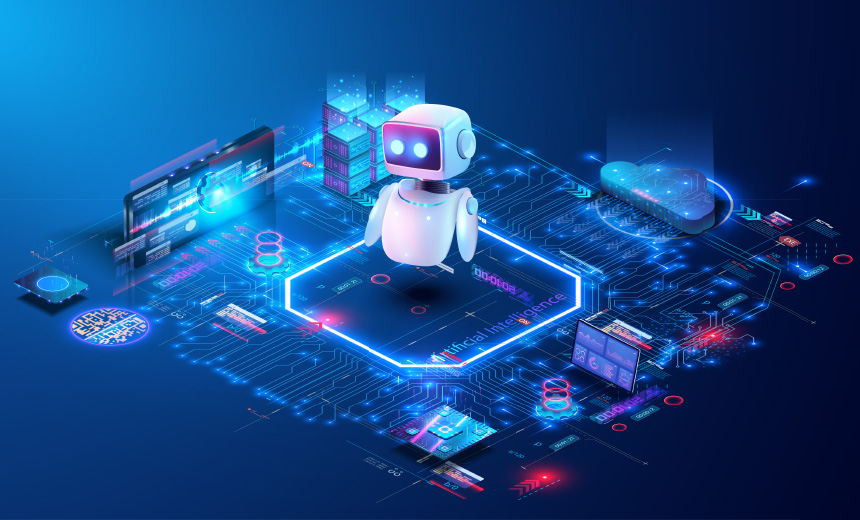Quote for the day:
"Good things come to people who wait, but better things come to those who go out and get them." -- Anonymous
AI Agents Are Coming to Work: Are Organizations Equipped?

The promise of agentic AI is already evident in organizations adopting it.
Fiserv, the global fintech powerhouse, developed an agentic AI application that
autonomously assigns merchant codes to businesses, reducing human intervention
to under 1%. Sharbel Shaaya, director of AI operations and intelligent
automation at Fiserv, said, "Tomorrow's agentic systems will handle this
groundwork natively, amplifying their value." In the automotive world, Ford
Motor Company is using agentic AI to amplify car design. Bryan Goodman, director
of AI at Ford Motor Company, said, "Traditionally, Ford's designers sculpt
physical clay models, a time-consuming process followed by lengthy engineering
simulations. One computational fluid dynamics run used to take 15 hours, which
AI model predicts the outcome in 10 seconds." ... In regulated industries,
compliance adds complexity. Ramnik Bajaj, chief data and analytics officer at
United Services Automobile Association, sees agentic AI interpreting requests in
insurance but insists on human oversight for tasks such as claims adjudication.
"Regulatory constraints demand a human in the loop," Bajaj said. Trust is
another hurdle - 61% of organizations cite concerns about errors, bias and data
quality. "Scaling AI requires robust governance. Without trust, pilots stay
pilots," Sarker said.
Code, cloud, and culture: The tech blueprint transforming Indian workplaces

The shift to hybrid cloud infrastructure is enabling Indian enterprises to
modernise their legacy systems while scaling with agility. According to a report
by EY India, 90% of Indian businesses believe that cloud transformation is
accelerating their AI initiatives. Hybrid cloud environments—which blend
on-premise infrastructure with public and private cloud—are becoming the default
architecture for industries like banking, insurance, and manufacturing. HDFC
Bank, for example, has adopted a hybrid cloud model to offer hyper-personalised
customer services and real-time transaction capabilities. This digital core is
helping financial institutions respond faster to market changes while
maintaining strict regulatory compliance. ... No technological transformation is
complete without human capability. The demand for AI-skilled professionals in
India has grown 14x between 2016 and 2023, and the country is expected to need
over one million AI professionals by 2026. Companies are responding with
aggressive reskilling strategies. ... The strategic convergence of AI, SaaS,
cloud, and human capital is rewriting the rules of productivity, innovation, and
global competitiveness. With forward-looking investments, grassroots upskilling
efforts, and a vibrant startup culture, India is poised to define the future of
work, not just for itself, but for the world.
Bridging the Gap Between Legacy Infrastructure and AI-Optimized Data Centers

Failure to modernize legacy infrastructure isn’t just a technical hurdle; it’s a
strategic risk. Outdated systems increase operational costs, limit scalability,
and create inefficiencies that hinder innovation. However, fully replacing
existing infrastructure is rarely a practical or cost-effective solution. The
path forward lies in a phased approach – modernizing legacy systems
incrementally while introducing AI-optimized environments capable of meeting
future demands. ... AI’s relentless demand for compute power requires a more
diversified and resilient approach to energy sourcing. While Small modular
reactors (SMRs) present a promising future solution for scalable, reliable, and
low-carbon power generation, they are not yet equipped to serve critical loads
in the near term. Consequently, many operators are prioritizing behind-the-meter
(BTM) generation, primarily gas-focused solutions, with the potential to
implement combined cycle technologies that capture and repurpose steam for
additional energy efficiency. ... The future of AI-optimized data centers lies
in adaptation, not replacement. Substituting legacy infrastructure on a large
scale is prohibitively expensive and disruptive. Instead, a hybrid approach –
layering AI-optimized environments alongside existing systems while
incrementally retrofitting older infrastructure – provides a more pragmatic path
forward.
Why a Culture of Observability Is Key to Technology Success

A successful observability strategy requires fostering a culture of shared
responsibility for observability across all teams. By embedding observability
throughout the software development life cycle, organizations create a proactive
environment where issues are detected and resolved early. This will require
observability buy-in across all teams within the organization. ... Teams that
prioritize observability gain deeper insights into system performance and user
experiences, resulting in faster incident resolution and improved service
delivery. Promoting an organizational mindset that values transparency and
continuous monitoring is key. ... Shifting observability left into the
development process helps teams catch issues earlier, reducing the cost of
fixing bugs and enhancing product quality. Developers can integrate
observability into code from the outset, ensuring systems are instrumented and
monitored at every stage. This is a key step toward the establishment of a
culture of observability. ... A big part is making sure that all the
stakeholders across the organization, whether high or low in the org chart,
understand what’s going on. This means taking feedback. Leadership needs to be
involved. This means communicating what you are doing, why you are doing it and
what the implications are of doing or not doing it.
Why Agile Software Development is the Future of Engineering

Implementing iterative processes can significantly decrease time-to-market for
projects. Statistics show that organizations using adaptive methodologies can
increase their release frequency by up to 25%. This approach enables teams to
respond promptly to market changes and customer feedback, leading to improved
alignment with user expectations. Collaboration among cross-functional teams
enhances productivity. In environments that prioritize teamwork, 85% of
participants report higher engagement levels, which directly correlates with
output quality. Structured daily check-ins allow for quick problem resolution,
keeping projects on track and minimizing delays. Frequent iteration facilitates
continuous testing and integration, which reduces errors early in the process.
According to industry data, teams that deploy in short cycles experience up to
50% fewer defects compared to traditional methodologies. This not only expedites
delivery but also enhances the overall reliability of the product. The focus on
customer involvement significantly impacts product relevance. Engaging clients
throughout the development process can lead to a 70% increase in user
satisfaction, as adjustments are made in real time. Clients appreciate seeing
their feedback implemented quickly, fostering a sense of ownership over the
final product.
Why Risk Management Is Key to Sustainable Business Growth

Recent bank collapses demonstrate that a lack of effective risk management
strategies can cause serious consequences for financial institutions, their
customers, and the economy. A comprehensive risk management strategy is a tool
to help banks protect assets, customers, and larger economic problems. ... Risk
management is heavily driven by data analytics and identifying patterns in
historical data. Predictive models and machine learning can forecast financial
losses and detect risks and customer fraud. Additionally, banks can use
predictive analytics for proactive decision-making. Data accuracy is of the
utmost importance in this case because analysts use that information to make
decisions about investments, customer loans, and more. Some banks rely on
artificial intelligence (AI) to help detect customer defaults in more dynamic
ways. For example, AI could be used in training cross-domain data to better
understand customer behavior, or it could be used to make real-time decisions by
incorporating real-time changes in the market data. It also improves the
customer experience by offering answers through highly trained chatbots, thereby
increasing customer satisfaction and reducing reputation risk. Enterprises are
training generative AI (GenAI) to be virtual regulatory and policy experts to
answer questions about regulations, company policies, and guidelines.
How U.S. tariffs could impact cloud computing

Major cloud providers are commonly referred to as hyperscalers, and include
Amazon Web Services (AWS), Microsoft Azure, and Google Cloud. They initially may
absorb rising cloud costs to avoid risking market share by passing them on to
customers. However, tariffs on hardware components such as servers and
networking equipment will likely force them to reconsider their financial
models, which means enterprises can expect eventual, if not immediate, price
increases. ... As hyperscalers adapt to increased costs by exploring nearshoring
or regional manufacturing, these shifts may permanently change cloud pricing
dynamics. Enterprises that rely on public cloud services may need to plan for
contract renegotiations and higher costs in the coming years, particularly as
hardware supply chains remain volatile. The financial strain imposed by tariffs
also has a ripple effect, indirectly affecting cloud adoption rates. ...
Adaptability and agility remain essential for both providers and enterprises.
For cloud vendors, resilience in the supply chain and efficiency in hardware
will be critical. Meanwhile, enterprise leaders must balance cost containment
with their broader strategic goals for digital growth. By implementing
thoughtful planning and proactive strategies, organizations can navigate these
challenges and continue to derive value from the cloud in the years ahead.
CIOs must mind their own data confidence gap

A lack of good data can lead to several problems, says Aidora’s Agarwal. C-level
executives — even CIOs — may demand that new products be built when the data
isn’t ready, leading to IT leaders who look incompetent because they repeatedly
push back on timelines, or to those who pass burden down to their employees.
“The teams may get pushed on to build the next set of things that they may not
be ready to build,” he says. “This can result in failed initiatives,
significantly delayed delivery, or burned-out teams.” To fix this data quality
confidence gap, companies should focus on being more transparent across their
org charts, Palaniappan advises. Lower-level IT leaders can help CIOs and the
C-suite understand their organization’s data readiness needs by creating
detailed roadmaps for IT initiatives, including a timeline to fix data problems,
he says. “Take a ‘crawl, walk, run’ approach to drive this in the right
direction, and put out a roadmap,” he says. “Look at your data maturity in order
to execute your roadmap, and then slowly improve upon it.” Companies need
strong data foundations, including data strategies focused on business cases,
data accessibility, and data security, adds Softserve’s Myronov. Organizations
should also employ skeptics to point out potential data problems during AI and
other data-driven projects, he suggests.
AI has grown beyond human knowledge, says Google's DeepMind unit

Not only is human judgment an impediment, but the short, clipped nature of
prompt interactions never allows the AI model to advance beyond question and
answer. "In the era of human data, language-based AI has largely focused on
short interaction episodes: e.g., a user asks a question and the agent
responds," the researchers write. "The agent aims exclusively for outcomes
within the current episode, such as directly answering a user's question."
There's no memory, there's no continuity between snippets of interaction in
prompting. "Typically, little or no information carries over from one episode to
the next, precluding any adaptation over time," write Silver and Sutton.
However, in their proposed Age of Experience, "Agents will inhabit streams of
experience, rather than short snippets of interaction." Silver and Sutton draw
an analogy between streams and humans learning over a lifetime of accumulated
experience, and how they act based on long-range goals, not just the immediate
task. ... The researchers suggest that the arrival of "thinking" or
"reasoning" AI models, such as Gemini, DeepSeek's R1, and OpenAI's o1, may be
surpassed by experience agents. The problem with reasoning agents is that they
"imitate" human language when they produce verbose output about steps to an
answer, and human thought can be limited by its embedded assumptions.
Understanding API Security: Insights from GoDaddy’s FTC Settlement

The FTC’s action against GoDaddy stemmed from the company’s inadequate security
practices, which led to multiple data breaches from 2019 to 2022. These breaches
exposed sensitive customer data, including usernames, passwords, and employee
credentials. ... GoDaddy did not implement multi-factor authentication (MFA) and
encryption, leaving customer data vulnerable. Without MFA and robust checks
against credential stuffing, attackers could easily exploit stolen or weak
credentials to access user accounts. Even with authentication, attackers can
abuse authenticated sessions if the underlying API authorization is flawed. ...
The absence of rate-limiting, logging, and anomaly detection allowed
unauthorized access to 1.2 million customer records. More critically, this lack
of deep inspection meant an inability to baseline normal API behavior and detect
subtle reconnaissance or the exploitation of unique business logic flaws –
attacks that often bypass traditional signature-based tools. ... Inadequate
Access Controls: The exposure of admin credentials and encryption keys enabled
attackers to compromise websites. Strong access controls are essential to
restrict access to sensitive information to authorized personnel only. This
highlights the risk not just of credential theft, but of authorization flaws
within APIs themselves, where authenticated users gain access to data they
shouldn’t.
No comments:
Post a Comment